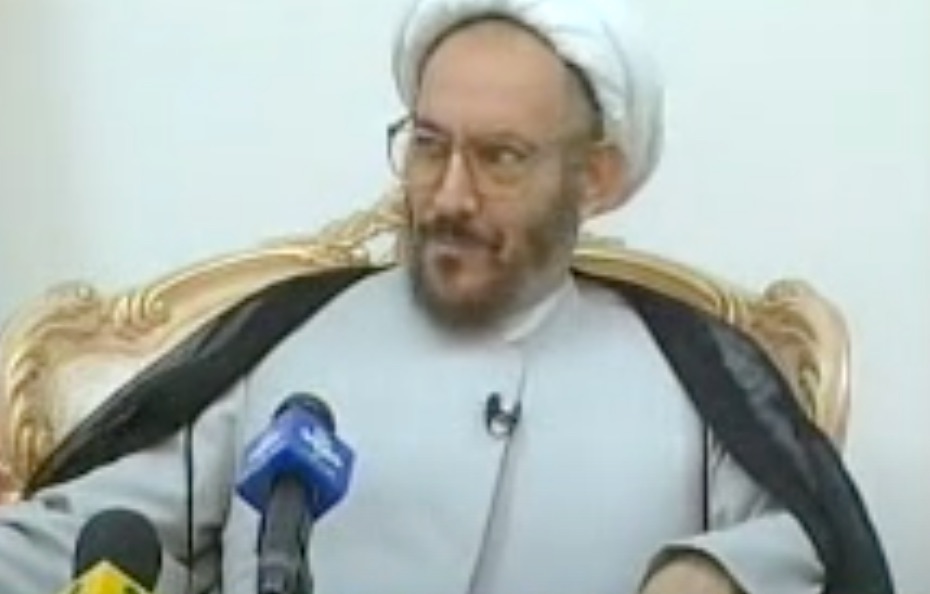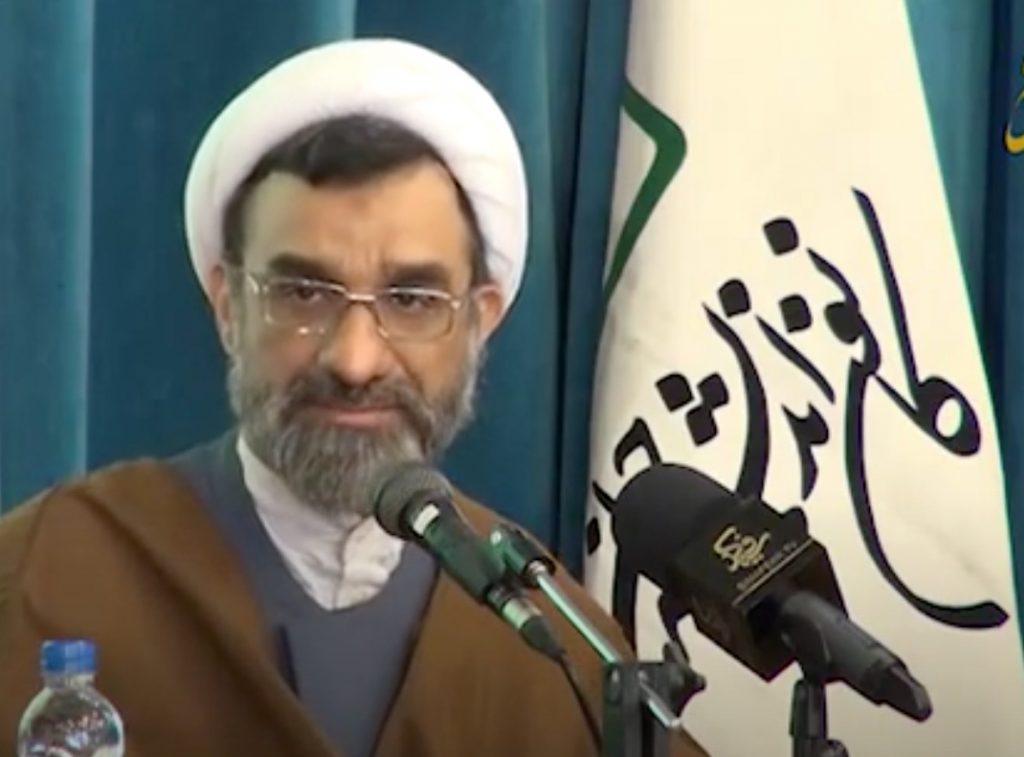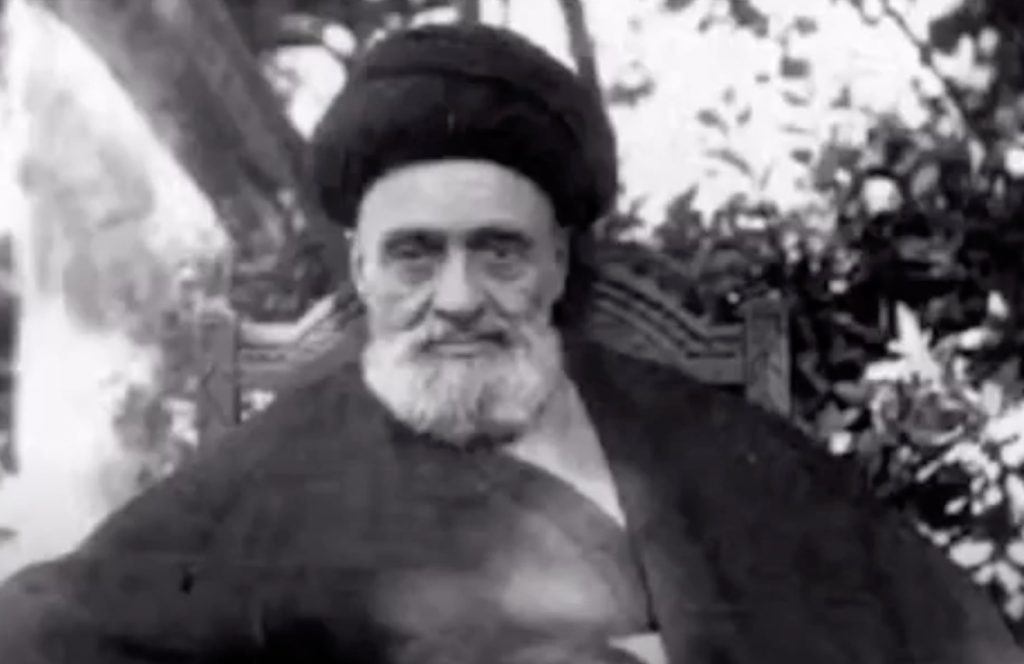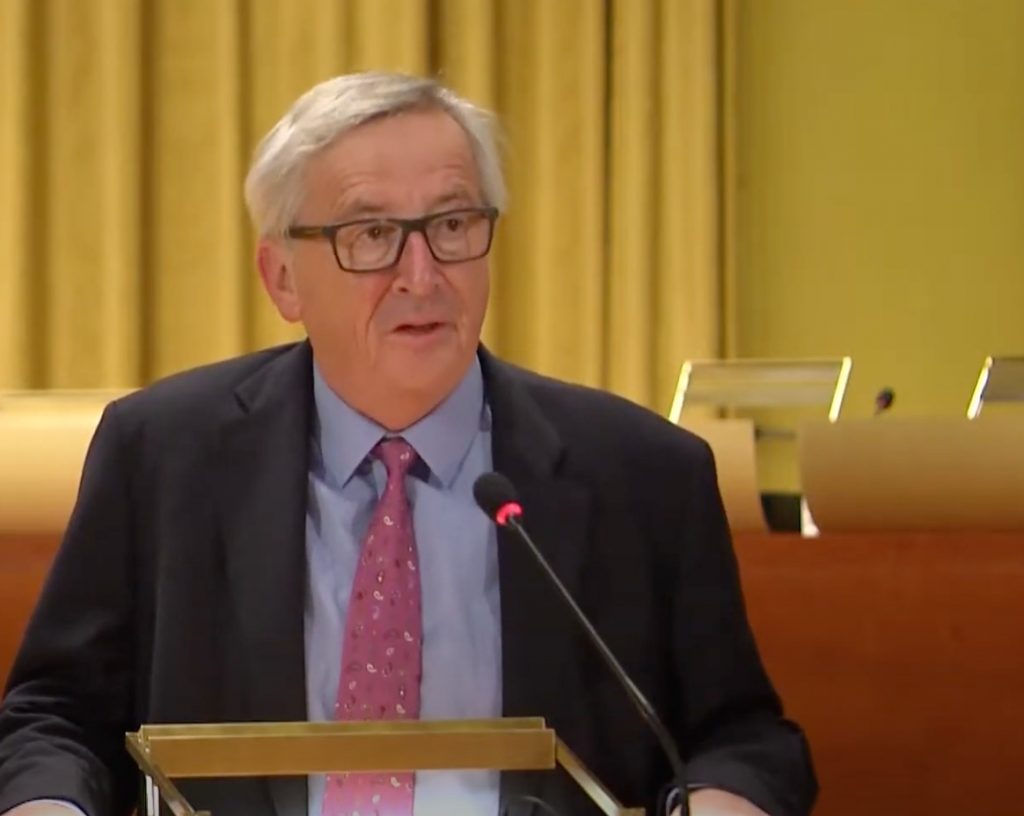I did a video discussing our most recent article on the phenomena of Iranian nationalism:
“We hear the shouts of the world-eating Jews from the throat of the Saudi king … Our missiles will rain down on our enemies. Our Sejjil Missiles will drop in the heart of Tel Aviv. The voice of Heydar [Ali] will prevail from the Kaaba. This is the Shia flag that will be waved from the top of the world. We will soon write ‘Ya Heydar e Karar’ (Imam Ali’s honorific title gained after the Battle of Khyber) on the green flag of Saudi Arab.” — Nohe (Iranian Shiite song)
Go up, O Elam!
Besiege, O Media!
All its sighing I have made to cease. — Isaiah 21:2
Within the last 6 years or so, there as has been much talk on the igniting of nationalism in the world. We have been hearing much on the spark of far-Right politics in countries like Germany, but we have been hearing very little on the phenomena of nationalism in Iran. We at shoebat.com decided to inquire into the world of nationalism in Iran, not as an isolated situation, but rather as something that can synthesize with another phenomena, and that is the growing rage in Germany to assail over and break away from the United States and establish its own power within Europe. The United States pressures European countries not to have any business ties with Iran, but Germany is adamant about its wants and still remains to be Iran’s biggest trading partner in Europe. With America no longer in the Iran Deal, there is no US control over what Iran does as it continues to exceed its nuclear production. As Iran becomes more dangerous, the rage within the country grows more violent; rage to destroy Saudi Arabia — its Sunni enemy — who it sees as a prostitute for the Jews; a rage to destroy Israel which has been filled with consternation over the rise of Iran as a regional power. Germany is the only country in history that has almost succeeded in exterminating the nation of Israel, and Iran today desires to carry out this very slaughterhouse. The countries — Germany and Iran — are united in their desire to break America’s empire, and perhaps the Star of David will be shattered under the shadow of the Iron Cross and the Shiite flag of Ali. In the Book of Isaiah it speaks of Elam (Iran) rising against Arabia and Israel. In the 21st chapter of Isaiah it reads:
“Go up, O Elam!
Besiege, O Media!” (Isaiah 21:20)
While the prophecy of Isaiah focuses on Elam’s destruction of Arabia, few biblical expositors pay close attention to what the same chapter later describes: Israel is being crushed: “O my people, crushed on the threshing floor, I tell you what I have heard from the LORD Almighty, from the God of Israel.” (Isaiah 21:10)
The prophecy describes a war torn Arabia, devastated by violence and its people fleeing for refuge:
“In the forest in Arabia you will lodge,
O you traveling companies of Dedanites.
O inhabitants of the land of Tema,
Bring water to him who is thirsty;
With their bread they met him who fled.
For they fled from the swords, from the drawn sword,
From the bent bow, and from the distress of war.” (Isaiah 21:13-15)
While Tema is today’s Medina (the second holiest city in Arabia), the prophecy speaks of a massive refugee problem as a result of an Iranian-Arab war. The Iranians of today are longing to destroy Saudi Arabia, they are also yearning for the destruction of Israel, and Isaiah foretells of an Iranian devastation of the Jewish nation. In the next chapter it speaks of Elam (Iran) bringing destruction to the City of David — Jerusalem:
“Elam bore the quiver
With chariots of men and horsemen,
And Kir uncovered the shield.
It shall come to pass that your choicest valleys
Shall be full of chariots,
And the horsemen shall set themselves in array at the gate.
He removed the protection of Judah.
You looked in that day to the armor of the House of the Forest;
You also saw the damage to the city of David,
That it was great” (Isaiah 22:6-9)
Scripture also foretells the shattering of Israel’s national security. It speaks of the removal of Israel’s defenses — “the armor of the House of the Forest” — which the NLT renders as: “Judah’s defenses have been stripped away.
You run to the armor for your weapons”, foretelling that Israel’s national security apparatus will be shattered. Micah also speaks of the devastation of Israel’s security defenses: “I will cut off the cities of your land and throw down all your strongholds” (Micah 5:11). We can expect the destruction of Israel’s Dimona and Soreq nuclear facilities. While many may think that Israel has the capabilities to defeat regional superpowers like Turkey and Iran, when we consider the fact that there is very little buffer between Israel and its neighbors, and how Israel’s Iron Dome was not as effective as many thought in the most recent conflict with Gaza, it becomes clear that the nation of Israel does not possess the invincibility that a great many people perceive.
In holy write we find the Iranian warpath foretold, and today we are witnessing Iran rising as a regional power. While many generalize the threat of Iran as an Islamic one (and it is), these ignore that with the coming of war also comes the spark of pride, the manifestation of nationalism. This phenomenon of nationalism is also being witnessed in Turkey and other Islamic countries. It is a mistake to simply look at countries like Iran as just another Muslim state; we must also factor in that — just like in any other nation — nationalism plays a central influence.
In the trend of nationalism within Iran there is a synthesis between Shia Islam and a praise of pre-Islamic culture, while Sunni Islam is looked down upon as being a part of Arab tribalism. Iranians revere their country as “God’s favorite nation,” destined to lead the Muslim world. There is a central aspect to Iranian identitarianism which focuses on the the Persian ethnic-linguistic (Iraniyat), and there has been tension between the Iraniyat and Islamism. For example, the Pahlavi regime of the Shah put more of an emphasis on the Iraniyat than on Islam. The Iranian journalist Sobh Sadegh described this conflict as such:
“Regarding Iranian identity and Islamic identity, some believe in a dichotomy and say that our Islamic identity and the framework that religion has set for us are not related to our national identity, on the other hand, some are “archaic and secular”. There are those who speak of the lack of empathy between Iranian national identity and Islamic identity.”
A major opinion in Iran is that nationalism and religion are inseparable. The Iranian philosophy professor, Abdol Hossein Khosrow-Panah, detailed how many people in Iran “believe in the fusion of Iranian-Islamic culture and identity, such as some of the writings of the late Shariati in which Islamic and Iranian culture are intertwined. Martyr Motahhari also expressed such an opinion in the book of mutual services between Iran and Islam that an interaction can be established between these two categories.”
The Iranians have maintained their Islamic identity while at the same time holding onto their own Iranian identity, creating a fusion that is distinct from the Islam of their archenemies, the Arabs. There is a belief in Iran that the reason why Iranians converted to Islam was not because of the Arabs, but because of their “morality and justice-centered spirit” and their “quest for freedom.” This mythical belief was reflected by Hojjat al-Islam Ali Yunesi, former Minister of Intelligence and special advisor to President Rouhani, when he described Iran’s devotion to Islam as something stemming from a history in which Iranians never worshipped fire but had always believed in one God (yektaparast). Now, the idea that Iranians have never worshipped fire is obviously untrue, given the fact that thousands of years ago the worship of fire was central in Iranian religion. But nonetheless, there is this idea within Iran that Islam was perfect for the country due to its history of monotheism.
Numerous Iranian writers have argued that Iranians were converting to Islam before the Arabian conquest of Iran. They point to the conversion of Salman al-Farisi, a companion of the Prophet Muhammad and the first Persian to become Muslim, as evidence of a broad phenomena of Iranian appeal to the Islamic religion. Moreover, because Yemen was under the control of the Iranian Sasanian Empire when Ali (who the Iranians revere as the successor to Muhammad) preached Islam there, his call to conversion was to the whole Iranian nation.
When the Arabs did invade Iran it was extremely gory. So much so, that the most famous battle in the Arab conquest of Iran is called “the Battle of Blood River” (known officially as the Battle of Ullais). In this battle, Khalid ibn al-Walid, the military commander under Muhammad and the caliphs Abu Bak and Umar, exclaimed a prayer: “O Lord! If you give us victory, I shall see that no enemy warrior is left alive until their river runs with their blood.” In the aftermath of the battle, al-Walid took Persians and their Arab Christian allies to a river where they were slaughtered and their blood flowed like a river. It actually took a day and a half to behead all of the captives. The obstacle for Khalid was that the ravine of blood coagulated and Khalid’s troops were forced to eventually release water into the canal in order that it would run red with the blood of the slain lest Khalid’s vow be left unfulfilled. (1)
With such a horror in the Arab conquest of Iran, how then do the Iranians reconcile their Islamic faith with such a history? They simply look to Ali who they esteem as a man of compassion who treated the Persians as equals unlike Khalid ibn al-Walid, Umar bin al-Khattab and Uthman bin A’affan who believed in Arab supremacy. Iranians believe that they hold onto a mystical Islam unlike their Arab neighbors, and are an intelligent people who recognized the pure teachings of Muhammad. The bottom line of the Iranian-Arab conflict over the religion of Muhammad is truly Arabization versus the Persianate. The Iranians (as Daniel the prophet predicted refuse to Arabize and want an Islam that is free of the ugly aspects of Arabian culture. There is more to Daniel’s prophecy in his Second Chapter than meets the eye of western commentary (2) since the entire structure of the image of gold, silver, bronze and Iron does not exclude Persia (Iran, the silver), especially since these empires collapse at the end of days. In fulfillment, today Iran (Persia) want a more of a non-Arabized mystical Islam fused together with Persian culture and linked to Persian history, and not the Islam of Arabian culture.
Meir Litvak summarizes the struggle against Arabization:
“While Umar (the ultimate evil ruler in Shi’a tradition) disparaged and mistreated the Iranians, Imam Ali and other Imams spoke Persian occasionally as an indication of the respect they had for Iranians and their culture. In particular, they praised the piety and conduct of the people of Qom and Khorasan (Mashhad), the two holy cities for the Shi’a in Iran. Later on, since the Umayyads and Abbasids treated the Iranians as “second rate” Muslims, they were repudiated by the Iranians and had no impact on “Iranian national identity and national essence.” By contrast, the Shi’a Imams became the “refuge of the oppressed,” and their relations with the Iranians had been truly “Islamic and humane,” and they “quenched” the Iranians’ thirst for justice and equality. Moreover, once the Iranians accepted Islam, they looked for the best source to address intellectual and doctrinal challenges and found it in the Imams. In other words, unlike the crude Arabized Sunni Islam, the Iranians saw Shi’aism as the more advanced branch of Islam which corresponded to their thirst for the truth. It was this fusion between Iranian traits and the nature of Shi’aism, which laid the ground for the consolidation of Shi’aism in Iran, and from then on the Iranians supported every Shi’a dynasty that ruled that part of the world.”
The Iranians, says professor Khosrow-Paneh, rejected the Arabian Islam of the Umayyads and the Abbasids, and have established their own Iranian Islamic identity: “Iranians did not accept Umayyad Islam and Abbasid Islam, so they rejected the negative values of ancient Iran. The Iranians merged the positive values of the Iranian nation with the original Islamic values and created an identity that is interpreted as “national-Islamic identity”.”
The Iranians want to grip onto the Islamic religion while at the same time holding onto their Iranian identity free of any taint of Arab culture. It is similar to what the Japanese did, absorbing Western technology while at the same time preserving their Japanese culture with its fusion of Buddhism and Shintoism. The resistance of the Iranians towards Arabization was alive and well after the Arabian conquest of Iran. The Persian poet, Ismail ibn Yasar al-Nisai — who worked within the court of the Umayyad Caliphate, spoke of the roots of the Iranian race and the glory of its civilization and history as distinct from Arab culture:
“I swear to your ancestor that I am not weak in defense of my honor!
I have great roots and my glory cannot be compared with others! And my tongue is as poisonous as the sharpness of a sword.
With this language, I support the honor of the original (Persian/Iranian) lineage, who were all great and crowned rulers.
Open commanders and chiefs, border guards, pioneers, chosen benefactors and hospitable
Who, like Khosrow (Anoushirvan) and Shapur and Hormozan, deserves praise and strain!”
Here he praises his ancestry and even goes so far as to exalt Khosrow, a pagan king of Iran who fought the Christian Byzantines in the fourth century; Shapur, another pagan king of Iranian history; and Hormuzan, a Persian military officer who fought the Arab Muslim conquerers of Iran in the Battle of Qadisiyyah. All of these historical figures were not Muslim but a part of the pre-Islamic Iranian religion of Zoroastrianism and fire worship, and thus the words of the poet, al-Nisai, are not about praising Islam but about revering Iranian identity.
This ideology of the Iranians is not entirely Islamic, but really a syncretism between identitarianism and Shia Islamism. There is within the country a strong religion of Iran itself. This was reflected by Esfandiar Rahim Mashaei (an advisor to president Mahmoud Ahmadinejad) when he publicly declared, “We should believe in the idea of Iran, in the ideology of Iran.”
When Mashaei said this, it sparked outrage from Iran’s conservative establishment who wants Islam to be the dominating belief within Iran and not an ethno-nationalist religion. Mashaei’s statement was a reflection of a growing trend within Iran, one of ethnic pride and nationalist spirituality. This religion of soil ignores the Islamic prohibition of revering other gods and will praise artifacts of Iran’s pagan past. In 2010 Ahmedinejad saw the Cyrus Cylinder, an ancient text praising Emperor Cyrus as being chosen by the pagan god Marduk, as it was in display in Tehran (this was after almost a decade of Iran working to convince the British to bring it to Iran). The cylinder describes how “[Marduk] inspected and checked all the countries, seeking for the upright king of his choice. He took the hand of Cyrus, king of the city of Anshan, and called him by his name, proclaiming him aloud for the kingship over all of everything.”
Yet — despite the standard Islamic boasting of how the paganism of pre-Islamic lands was crushed by the Quran — Ahmedinejad described the cylinder as a “testament of all believers” and the standard by which “all rulers and kings in the history of humankind” must be measured. This adulation for pre-Islamic Iranian civilization is an ideology that reflects a political mission. The Iranians have a dream of reviving the Persian Empire, and Ahmedinejad’s lifting up of the Cylinder reflects this aspiration, since the ancient text reads: “I am Cyrus, king of the world, great king, powerful king, king of Babylon, king of Sumer and Akkad, king of the four quarters [of the earth], son of Cambyses, great king, king of Anshan, descendant of Teispes, great king, king of Anshan, the perpetual seed of kingship, whose reign Bel [Marduk] and Nebo love, and with whose kingship, to their joy, they concern themselves.” When Isaiah foretold of the end of things — “Bel bows down, Nebo stoops” (Isaiah 46:1) — no longer should this puzzle interpreters; how could an ancient Mesopotamian religion revive? Indeed, today the Iranian government praises an ancient artifact worshipping Bel and Nebo.
Iran wants to be like Cyrus, while ruling the world under the banner of Shia Islam. In 2018 there was a concert in Iran of a Shiite song entitled Nohe, in which the singer firmly patted the Shiite flag while singing: “This is the Shia flag that will be waved from the top of the world.” But, as Ahmedinejad’s praise of the cylinder indicates, this revived Persian power would not be entirely Islamic, and would contain the reverence of country and even the pagan roots of the nation. In Iran, pagan holidays are still celebrated. Iranians still observe Chaharshanbe Suri, a celebration of fire (which was worshipped by pagan Iranians before Islam) in which Iranians hop over flames.
Iranians still celebrate Nowruz, a festivity of the new year in dedication to nature. In fact, Iranian tradition teaches that the 12th Imam will appear before humanity on the day of Nowruz.
The insistence of the Iranians to preserve these festivities is another way of defying Arabization. The Iranians see themselves as having an Islam purer than that of the Arabs. This was also reflected by the Persian writer Musa ibn Yasar who said: “The companions of the Messenger of God (PBUH) were violent deserters. When we Iranians came, we purified the religion of Islam.” The Iranian newspaper, Kayhan (which is connected to the Iranian government), states that the Arabs — before Islam — were a “cruel and uncultured people” who lacked any understanding of written theology and laws, and were a people who had never witnessed a true prophet, and had been vacuous of divine and heavenly faith and belief.
If the Arabs did not receive Islam from a fellow Arab — so the newspaper teaches — then they would have never accepted Islam. The Iranians, on the other hand, were sophisticated enough to look past language differences and recognize spiritual truths. According to Iranian propaganda, the Qu’ran and the Prophet recognized the Iranians as a “God-fearing people, courageous and firm in their belief and possessing God-given intelligence and aptitude,” and praised their character traits as those of “the Party of God” (Hizballah). Iran sees itself as the true defender and preserver of Islam. This is reflected by Iran’s constitution which depicts the Supreme Leader as Vali amr al-Muslimin (Guardian of the Muslims) or in the official English translation “Supreme Leader of Muslims”. In 1995, Hassan Rouhani (who was at the time the head of the Center for Strategic Studies of the Expediency Council) declared that “The eminent leader of the Revolution, his eminence Ayatollah Khamenei, may his shadow extend, is the leader of the world of Islam today. This has nothing to do with whether we say so or not.” General Qassem Suleimani, the late commander of the Quds forces, boasted that thanks to the Islamic Revolution, “no country but Iran can currently claim leadership of the Islamic world.”
The Iranian philosophy professor, Abdol Hossein Khosrow-Panah, stated in 2009 that Sunni Islam had been hijacked by Caliphal (Caliphate) Islam and that the spirit of the religion of Muhammad was corrupted by the Arabized Caliphate to the point that the term Islamiyat was connected with Arab tribalism and chauvinism. In an interview, Khosrow-Panah explained: “Sometimes the meaning of Islam is the Islam that became the current of the caliphate and the period when the spirit of Islam fell victim to the Arab caliphate, so much so that if we talk about Islam, we mean the spirit of tribalism and ethnic-Arab pride.” Iranian ideologues like to point to a Hadith in which the Prophet Muhammad warned the Arabs that if they turn away from Islam, Allah “will replace you with another people who are not like you.” The Iranians hold that the people that replaces the Arabs are the Iranians because when the companions of Muhammad asked him to specify who these new people were to be, he replied: “If faith is in Soraya, a group of Persian men will acquire it.”
Others have even argued that the reason why Islam was so widely accepted in Iran is because of the similarities between pre-Islamic Iranian religion and Shia Islam, such as the ritual self-mutilation within the Shiite religion (Ashura) and the religious self-cutting that was done by ancient Iranians. Within the paradigm of Iranian nationalism is the belief that Iran threw away the corrupt elements of pre-Islamic Iranian culture while adopting pure Islam without the primitive aspects of Arabian Islam. The synthesis of pre-Islamic Iran with Islam was seen when Khamenei sought to nationalize the hijab. Before Iran was Islamic, there was a headscarf in society called the Chador, but it was only worn by elite women. Khamenei simply Islamized the Chador and argued that what was once only allowed for prestigious women can now be enjoyed by all women thanks to the democratic ways of Islam. The Chador, Khamenei declared, is “our national symbol and national garb”.
IRAN AND GERMANY
In Iran, there is even a phenomena of people believing in Iranian supremacy, revering their race as that of the Aryan heritage, a parallel ideology to Nazism with its emphasis on Aryanism. Khosrow-Paneh spoke of these racialists, stating that “some secularists and those who have ancient tendencies and emphasize Aryanism usually offer this interpretation of Islam.” There is definitely a racial element within Iranian nationalism that has become mainstream, and this is expressed by the belief that the reason why Iranians have a superior form of Islam to the one of the Arabs is because of something biologically innate within the Iranian people themselves. Khosrow-Paneh explains this eugenic ideology: “But there are also people who have linked Iranian national identity to truths that go back more to human instincts. … It seems to me that there is an innate feature and attribute in the human body that implies justice and truth-centeredness. But the most important factor that made Iranians accept pure Islam and oppose Umayyad Islam was their innate characteristics. …Those characteristics of Iranians, as I said, go back to the natural characteristics of Iranians.” The synthesis of Shia Islam and Iranian nationalism amalgamates into a religion of blood and soil that rages against both the Arabs and the Jews. This, as well, can be heard in the apocalyptic song, Nohe, when the singer proclaims:
“We hear the shouts of the world-eating Jews from the throat of the Saudi King … For as long as the divine spirit is in the heart of this soil (Iran), Our enemies will not be allowed to sleep a single restful night … Our Seijjil Missiles will drop in the heart of Tel Aviv.”
Here we have the praise of Iran as being a sacred land, ready to wipe out her enemies — the Arabs and the Jews — in World War Three. These Iranian nationalist fanatics are subscribing to a blood and soil ideology, something paralleled to Nazism. The National Socialist writer, Hansjoerg Maennel, who wrote for the Third Reich, spoke of the soil of Germany being divine: “As our Germanic forerunners already recognized, blood and soil are eternal and holy values. … And eternal too is the soil, hallowed by the blood poured forth in its defense.” And just as the Germans wanted to exterminate the Jews, these Iranian Shiite cultists long for the day when missiles “will drop in the heart of Tel Aviv.” And just as the Germans were fixated on being “Aryan,” today’s Iranian nationalists are no different, looking back to a distant past and mythologizing their “Aryan” roots.
This has been something quite prevalent in modern Iranian history. For example, in 1965 Mohammad Reza Shah gave himself the title of ariyāmehr, “the light of Aryans”. Reza also told the British ambassador Anthony Parsons: “We Aryans are in fact members of the European family. It’s a mere accident of geography that Iran is in the Middle East rather than among its fellow European neighbours”. This fixation on Aryanism did not diminish nor remain stagnate, but has continued to intensify. Iranian historian, Reza Zia-Ebrahimi, wrote in his 2016 work, The Emergence of Iranian Nationalism, on this bizarre obsession:
“New publications with strong dislocative nationalist overtones appear every year. The greater number of these recent publications is startling when compared to the literary works of the early Pahlavi era or the history treatises of the same period. Anyone familiar with dislocative nationalist literature can notice that these publications are highly repetitive, merely recycling the works of Akhundzadeh, Kermani, and their heirs. There is something new, however, and this is their generally appalling quality and their outlandish claims. Any inaccuracy, any nonsensical theory is admissible as long as it fits into the strategy of discursively soothing the reader’s concerns with the state of the country, fundamentalism having replaced backwardness as the main malady of modern Iran. Some authors today attempt to establish Aryan calendars or claim that ancient Iranians had space-faring ships. We have come full circle as these new publications have abandoned the little methodological soundness that one could find in Pahlavi-era dislocative treatises and returned to the preposterous inventiveness of a Kermani. This is all the more ironic for our time, as Iranians have never been as literate as today, and empirical data has never been as readily accessible.”
So the dangerous obsession with being Aryan still thrives in Iran, and its right amidst a flaming rage to wipe out the Jews. In other words, Iranian Nazism is very strong. It is no wonder that, after the Second World War, Nazis from the the Third Reich found refuge within Iran and gained prominent positions in the government. It is also not to our surprise that the Iranian government, for decades, has wanted to see Germany revive her power in Europe.
In 2006, Mouhmoud Ahmadinejad, in an interview with Der Spiegel, posed the question to the interviewer that out of the 60 million people who died in the Second World War, why “are only the Jews the center of attention?” The interviewer wanted to avoid the subject and said: “perhaps we should now move on to the next subject.” But Ahmadinejad was adamant: “No, I have a question for you. … Why must the German people be humiliated today because a group of people committed crimes in the name of the Germans during the course of history?” Such a statement could have easily come out of the far-Right German nationalist party, Alternative for Deutschland (AfD).
The words of Ahmadinejad are reminiscent to that of AfD leader Bjorn Hocke, when he lamented in 2017 that Germans were “the only people in the world to plant a monument of shame in the heart of its capital,” referring to a memorial to murdered Jews in Berlin, adding that Germans had the “mentality of a totally vanquished people.”
The beliefs of Iranian nationalists and German nationalists are the same when it comes to any focus on Germany’s past atrocities: they want them to be belittled or reduced to mere nominal attention. All of these people, of course, are bent on erasing the blood soaked history of what happened to the Jews. For those who wish for massacres to be forgotten want to simply repeat those very inhumanities. There has been a desire within Iran to see Germany revive herself. In the early 1950s, the popular Islamic preacher, Abol-Ghasem Kashani (who had been a major supporter of the Nazis in Iran) had expressed his desire to allow Germany to remilitarize itself. After the 1979 Iranian Revolution, Kashani (who was by then dead) would be a famous icon for the mullahs’ regime.
In 1972, Shah Mohammed Reza Pahlavi, expressed his desire for a revived Germany to German Chancellor Willy Brandt. In his notes Willy Brandt recounted how the Shah and his government “still regard Germany as a great power. They think that we should put the ‘guilt complex’ stemming from the Hitler period behind us and that we could assume the leading role in Europe.” In Germany today there is a complaint about how looking after the country’s national interest is demonized. This ‘demonization’ is, of course, due to the Holocaust, and thus the militarists of Germany want to cast away this stigma and allow for Germany to remilitarize, even going so far as calling for the country to have nuclear weapons. In August of 2018, the influential political scientist, Christian Hacke, wrote of how the “demonization of national interest has led the European Union into a dead end and deep crisis”; and how that in “the face of new transatlantic uncertainties and potential confrontations, national defense based on an independent nuclear deterrence capacity must be given priority.”
Notice the words Hacke is using: “transatlantic uncertainties” — he is referring to the United States no longer being reliable to deal with Germany’s security, and thus the Germans must have nuclear weapons. Both Germany and Iran are at tensions with the US; both are resistant to American control, both are seeking to become global powers, and both want to go nuclear.
The Iranians in the 50s and 70s wanted Germany to forgo its guilt and remilitarize itself into a great power again. Today, this Iranian dream is gradually becoming a reality. And Germany is pursuing national autonomy, in part, because of its desire to continue relations with the Iranians in spite of the Americans’ pressure on Europe to end commerce with Tehran. This desire for autonomy — in the name of preserving economic ties with Iran — has intensified to the point that rhetoric for replacing the US with Europe has been exclaimed. In 2018, Jean-Claude Juncker (who was then the president of the EU Commission) lamented that the US “no longer wants to cooperate with other parts in the world,” and concluded: “At this point, we have to replace the United States, which as an international actor has lost vigor, and because of it, in the long term, influence”.
A revived German empire has been a deeply rooted dream amongst Iranian nationalists. On August 4th, 1954, an anonymous Iranian dropped a note to the doorman which stated: “Hail Germany and the German people, death to your enemies who did not want you to stand up.” The note then went on to compare the situation of Germany to that of Iran: “Death to your enemies,” because the countries — Britain, the Soviet Union, and the United States — that had occupied Germany in 1945 did not want Iran to “stand up” either. So strong was sympathy for the Third Reich in Iran that the American Office of Strategic Services on June 23rd of 1945 reported how there was “a tendency to sympathize with rather than condemn those who have aided the Axis”. This sentiment in favor of the Third Reich was so ubiquitous that major German Nazis who worked with the Iranians during the Second World War were still collaborating with Iran after the war. In December of 1952 a new German-Iranian Chamber of Commerce was established in Hamburg’s Atlantic Hotel, and “almost all the founding members of 1936 were reunited and assembled,” as was reported in Orient magazine.
The organizer of this Chamber of Commerce was Reinhard Hubner, who was the Eastern affairs expert in Goebbel’s Propaganda Ministry while at the same time being the secretary for the 1936 German-Iranian Chamber of Commerce. West Germany’s first postwar ambassador to Iran was Lutz Gielhammer who — between 1934 and 1938 — was the head of the Central Economic Department for Iran’s Melli Bank. After 1938, Gielhammer was a member of the Central Financial Management of IG Farben (the Nazi ran pharmaceutical company heavily involved in human experimentation and slavery). On September 3rd of 1953, Gielhammer was appointed to be ambassador to Iran. In 1952, the Iranian government under Mossadegh appointed as their economic advisor the very person who served in Adolf Hitler’s government as President of the Central Bank (Reichsbank), Hjalmar Schacht, who was sent by Hitler himself to go to Iran and sign the Clearing Payments Agreement after which Germany made substantial investments in Iran’s industrial infrastructure.
The Mossadegh government of the 1950s also wanted to remove all British experts in Iran’s oil industry and replace them with Germans. In 1951 over four hundred Germans applied for the oil work, but the plan was stopped when the British representative on the High Commission that controlled West Germany vetoed the move, after which (as Ahmad Mahrad writes) “the federal minister for the economy asked the chairman of the Oil Association in Hamburg to halt the departure of 450 applicants.”
After the overthrow of Mossadegh in 1953 (a revolution that was facilitated by the CIA), the new prime minister of Iran was General Fazllollah Zahedi, who was a close collaborator with the Abwehr (the German military intelligence service for the Wehrmacht from 1920 to 1945) and the SD (Sicherheitsdienst, the intelligence unit for the SS and the Nazi Party) during the Second World War and, as a result, was arrested by the British in 1942. A 1953 report from Der Spiegel asks the question that if Zahedi revolted against Mossadegh with CIA support, “then this would not have been the first time in postwar history that former German contacts had transferred their loyalties to the Americans.” Indeed, during the Cold War the United States was backing Nazis and ultra-nationalists in Europe (including Turkey’s Grey Wolves paramilitary cult) as anti-Soviet proxies; this was under the Gladio operation and its obvious that such a policy extended into Iran.
Thus, it is not to one’s marvel that Bernhardt Schulze-Holthus, who served as an Abwehr agent, praised Zahedi’s coup as an anti-communist popular uprising and compared it to the German nationalist “uprising” of 1941-44 (the years when Nazi Germany was at war with the Soviet Union). As a result of the 1953 Revolution, General Fereydoon Batmanghelidj became the new chief of staff. Batmanghelidj was trained at the German technical school and was considered “very pro-German”. This was certainly revealed in a 1953 meeting with a German Embassy official to whom Batmanghelidj (holding a book on General Rommel) emphasized his wish “to employ German experts in the Iranian army.” He explicitly requested German experts who worked for the Third Reich and who would thus form a “counterweight to the Americans” inside Iran’s military. So here we see the Iranians working with the Germans to bypass American control.
Similarly, today we see Iran working with Germany in spite of the US’s pressure to not work with Tehran. Hence why Germany’s Federal Foreign Minister, Heiko Maas — speaking on business with Iran — wrote that it is essential “that we strengthen European autonomy by setting up payment channels that are independent of the USA, creating a European Monetary Fund and building an independent Swift system”. Germany wanting to bypass American oversight to collaborate with Iran is not new. When Batmanghelidj made the request to the Germans for Nazi military experts in 1953, the German Foreign Office did not deny this request, but rather sought to meet this demand without consulting the Americans or the British.
Going all the way back to the 1920s, Germany has been in economic relations with Iran. After the Second World War, West Germany revived economic ties with Iran in 1949 and from then on it has been, for the most part, continuously growing. Just to show you how deep Germany has been in Iran’s economy, according to Abolfazl Adli, from 1952 to 1959, West Germany was “the leading supplier of metal goods, machines, electrical goods and appliances, and motorcycles, and was in second place for cars, buses and bicycles” in Iran. By 1952 West Germany had replaced the US as Iran’s number one trading partner. Germany held this position until 1972 (when it was overtaken by the US), but went back to being Iran’s biggest trade partner in 1979. But even before 1979 Germany’s economic ties with Iran were huge. “West Germany’s economic ties with Iran are closer than with virtually any other non-European country” wrote Der Spiegel in 1975.
But currently trade between Iran and Germany has declined due to US pressure through sanctions. Reuters reports that “German exports to Iran fell by nearly half in the first six months of 2019 … suggesting companies are scaling back business ties with Tehran to avoid trouble with the United States after Washington reimposed sanctions.” Regardless of this, Germany still remains Iran’s biggest trading partner in Europe. In the midst of a growing Iranian nationalism that wants to see the destruction of Israel, with a reviving Germany (the only country to have almost exterminated the Jews) that wants to eclipse American power and desires to pursue ties with Iran, it makes one wonder if Germany will ever want to resume the Holocaust with Iran by its side.
NOTES
(1) Abu Jafar Muhammad ibn Jarir At-Tabari, the early Islamic historian and theologian recorded this event “Khalid said, ‘O Allah, if you deliver their shoulders to us, I will obligate myself to You not to leave any one of them whom we can overcome until I make their canal run with their blood.’ Then Allah defeated them for the Muslims and gave their shoulders to them. Khalid then commanded to his herald to proclaim to his men, ‘Capture! Capture! Do not kill any except he who continues to resist.’ As a result the cavalry brought prisoners in droves, driving them along. Khalid had detailed certain men to cut off their heads in the canal. He did that to them for a day and a night. They pursued them the next day and the day after, until they reached the Nahrayn and the like of that distance in every direction from Ullays. And Khalid cut off their heads.” Also see At-Tabari, Vol XI, The Challenge to the Empires, In series: The History of at-Tabari, (Ta’rikh al-rasul wa’l-muluk), Translated by K.Y. Blankkinship, SUNY series in near Eastern Studies, Bibliotheca Persica, State University of New York Press, Albany New York, 1993, p.44-45
(2) Daniel’s structure of the four metals included the gold (Babylon), silver (Persia), the bronze (Asia Minor), and they are all destroyed by Christ (the rock cut without hands). It is logical, then, to conclude a revival of these ancient empires. Western students focus on Daniel 2:41 which points to the nature of the two materials (Iron and Clay) as being partly weak and partly strong, but verse 43 is rarely addressed in full: “And in that you saw the iron mixed with common clay, they will combine with one another in the seed of men; but they will not adhere to one another, even as iron does not combine with pottery.” The other meaning of this riddle in this verse needs to be noted; the underlined words “mixed” and “combine” are actually the same words translated differently from the Aramaic, the original language of much of the Book of Daniel. The word is actually “Arab.” Strong’s Concordance confirms this “mArab {ar-ab’}; from ‘`arab’ (6150) in the figurative sense of sterility; Arab (i.e. Arabia), a country East of Palestine: –Arabia.” “or mereb (1 Kings 10:15), (with the article prefix), {eh’-reb}; from ‘`arab’ (6148); the web (or transverse threads of cloth); also a mixture, (or mongrel race):–Arabia, mingled people, mixed (multitude), woof.” And thus this passage can read: “And just as you saw the iron mixed with baked clay, so the people will be mixed (Arabized) with the seed of men (through intermarriage) and will not remain united, any more than iron does not mix with clay.”










